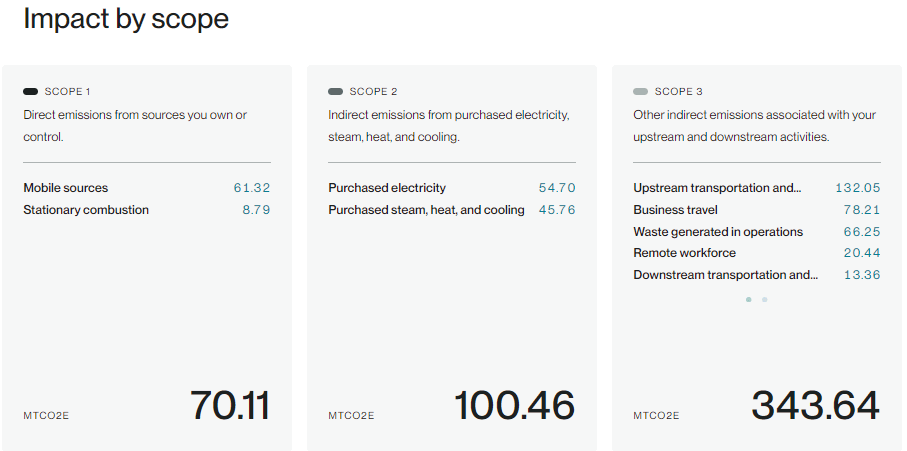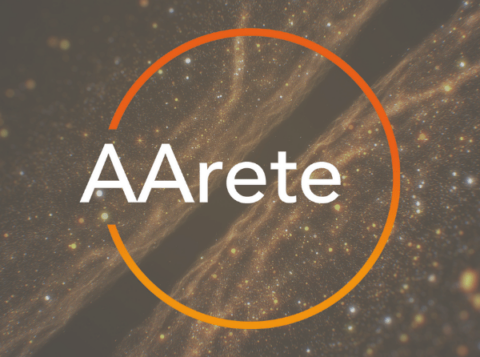What Is the Difference Between Scope 1, 2, and 3 Emissions?
This is an AArete ESG insight
To strategically reduce your carbon footprint and establish greater sustainability for your organization and supply chain, it’s crucial to examine your greenhouse gas emissions. This can be separated into 3 different scopes—scope 1, 2, and 3—which encompass emissions generated from owned sources, purchased energy, all the way through the value chain. The main difference between scope 1, 2, and 3 emissions is where they are sourced, but each one contributes to your total emissions and impacts your ability to reach net zero so you can comply with increased federal regulations, align with customer values, and achieve social responsibility by lessening your impact on climate change.
When researching the reputational ramifications of reducing greenhouse gas emissions across 29 countries, Energy Monitor found that 31.2% of companies said reducing their emissions had a positive effect on their reputation vs. 7.9% who said it did not, and reducing emissions was more likely to have a positive than negative impact on market demand.

You can also see the impact companies can make by looking more granularly. Consider Coca-Cola and their partnership with the World Wildlife Fund (WWF). Not only has their partnership helped further ongoing initiatives by WWF, but WWF has helped them identify and address their own scope 1, 2, and 3 emissions across their global operations to meet their reduction goals. The partnership has been well received by both organizations as they recently renewed their efforts and also praised by the community.
Below, we’ll delve into greater detail of each CO2 emission scope; clearly identify the categories; and explore how to leverage this information for proper measurement and management of your own environmental impact through emissions reporting.
Understanding Key Definitions and Categories for Scope 1, 2, and 3 Carbon Emissions
Scope 1: Direct Emissions
Scope 1 encompasses all direct greenhouse (GHG) emissions from sources directly owned or controlled by your organization, which can be divided into four distinct categories:
Stationary Combustion
Emission sources such as boilers, furnaces, and other burning equipment comprise the stationary combustion category of scope 1, including the direct burning of fossil fuels—like natural gas, coal, and oil—for heating and powering industrial processes on-site.
Mobile Combustion
Vehicles directly owned or controlled by your organization that burn fuel and produce emissions can be categorized as mobile combustion. This encompasses all cars, buses, vans, trucks, airplanes, forklifts, trains, and other modes of transportation and equipment that are used for company operations and utilize gas, diesel, or other fuels.
Process Emissions
Chemical reactions can occur in the manufacturing of cement, steel, or other chemicals. These reactions produce emissions categorized as process emissions.
Fugitive Emissions
Fugitive emissions include greenhouse gas leaks from refrigeration or air conditioning units, which—though critical for company operations—can release hazardous emissions like methane, carbon dioxide, and nitrous oxide that require close monitoring.
Scope 2: Indirect Emissions from Energy Consumption
Scope 2 emissions are indirect GHG emissions associated with your organization’s purchased energy consumption. Similar to scope 1, scope 2 has three to four categories:
Electricity
Electricity is the most common source of scope 2 emissions. It includes electricity generated by an office building or warehouse, or even electric vehicle (EV) company cars. The intensity of carbon emissions generated from electricity consumption can vary depending on the type of energy required for your energy use.
Steam
Steam is another source of scope 2 emissions utilized by companies to heat, power, or facilitate industrial processes. Steam derives from steam boilers, hospital sterilization methods, power generation for industrial facilities, and more.
Heating and Cooling
Due to their similar operational functions and greenhouse gas emissions, these services may be grouped together or assessed independently. Each is typically sourced from an external provider and contributes to your carbon footprint.

Scope 3: Indirect Value Chain Emissions
The final scope to define is scope 3 emissions, which we explain in greater detail here. This is essentially everything else that contributes to your total emissions, spanning fifteen different categories:
- Purchased goods and services
- Capital goods
- Fuel- and energy-related activities
- Upstream transportation and distribution
- Waste generated in operations
- Business travel
- Employee commuting
- Upstream emissions from leased assets
- Downstream transportation and distribution
- Processing of sold products
- Use of sold products
- End-of-life treatment of sold products
- Downstream emissions from leased assets
- Franchises
- Investments
How to Identify & Measure Each Scope
Once you have identified your emissions by scope, you can start to establish a sustainable development plan for your own operations to meet GHG protocol corporate standards.
While not all companies are required to submit a greenhouse gas protocol report, it may be encouraged by stakeholders.
To more effectively and efficiently measure scopes 1, 2, and 3, we launched AAchieve.ESG, which is an AI-powered, sustainability management software and consulting service designed to reduce your value chain emissions in each category. By utilizing the platform and our sustainability consulting experts, you can measure, manage, and report emissions data for each scope—even factoring in the complexities of measuring scope 3.
Below is an example of a scope report from AAchieve.ESG, showing the sources for direct and indirect emissions in scopes 1, 2, and 3 categories.




























































































































